Exploring Montezuma Castle National Monument is an Arizona bucket list adventure – even though it’s not actually a castle nor a remnant from Mexico’s past. It is, however, a spectacular, millennia-old cliffside dwelling that should be on your must-see list. Adventure on!
Disclosure: This post contains affiliate links. If you buy something from one of our affiliates, we receive a small commission at no extra charge to you. Thanks for helping to keep our blog up and running!
Table of Contents
Your guide to exploring Montezuma Castle National Monument
Montezuma Castle National Monument was established December 8th, 1906. It was created to preserve Southern Sinagua dwellings built between 1100 and 1425 CE.
The star attraction is Montezuma Castle itself – a 20-room, 5-storey high stone and adobe structure. Nestled into an alcove in a massive limestone cliff, this prehistoric site is an easy daytrip from Phoenix or Flagstaff. It draws people from around the world.
Did you know? The Antiquities Act of 1906 was the foundation for preserving and protecting archaeological heritage across the United States. Montezuma Castle was the first National Monument in Arizona. It is also the third in the country – after Devil’s Tower National Monument in Wyoming and El Morro National Monument in New Mexico – dedicated to preserving Native American culture.
All about Montezuma Castle
How did Montezuma Castle get its name?
Blame the misnomer on the Spaniards!
The Spaniards came to the area on a quest for gold in the late 1500s. They saw the cliffside ruin and thought it was impressive. Indeed, it was impressive enough for someone important, such as an Aztec emperor from Mexico named Montezuma. Built of stone, it looked to them like a castle.
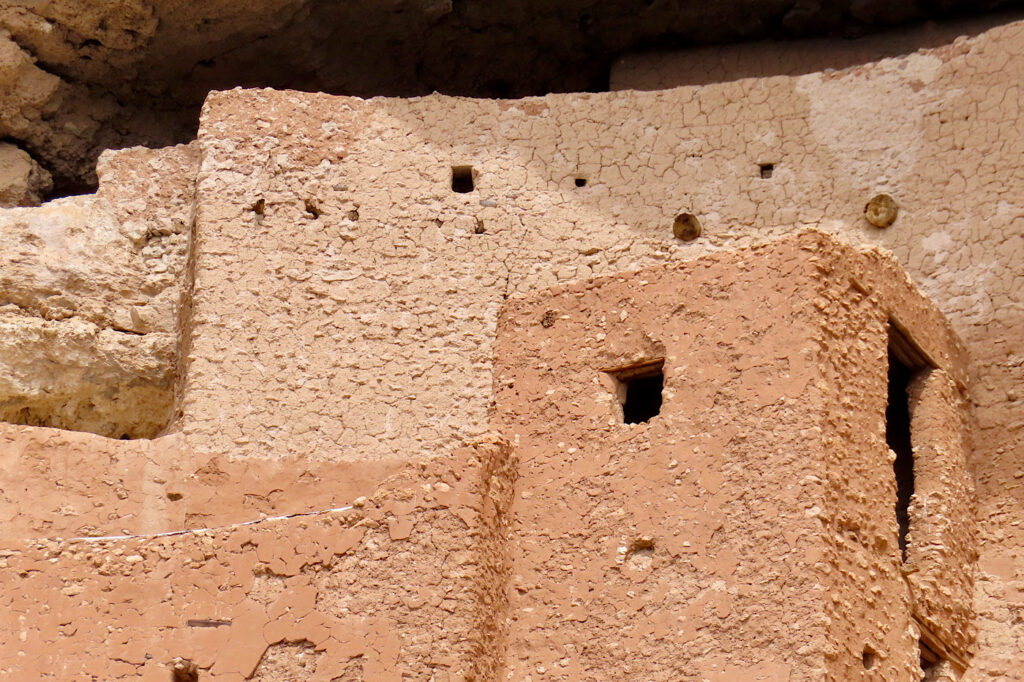
The name stuck.
Love rock castles, aka cliff dwellings? Don’t miss Cliff Palace in Mesa Verde National Park.
In addition, the Spaniards are ultimately responsible for the name given to the Native American culture that existed at the time – Sinagua. It comes from the Spanish words “sin agua” – meaning “without water.”
Early Spanish explorers called the San Francisco Peaks “sierras sin agua” because they were lacking rivers and streams. In 1939, Harold S. Colton – Founder & Director Emeritus of the Museum of Northern Arizona in Flagstaff – named the Sinagua culture after the area in which it was first identified.
Touring Montezuma Castle National Monument
We started our tour in the Visitor Centre and museum. It’s small, but it provides an excellent overview of the Sinagua culture. Heading outside, we strolled along the 0.3-mile (0.5 km) long paved path to see the castles. Yes, there is more than one cliffside dwelling.
Flowing down the cliff like a waterfall carved of stone, Montezuma Castle is the first – and most obvious structure – in the monument. Archaeologist believe this multi-storey complex would have been home to about 35 people. Each family group had a room of approximately 140 square feet (13 sqm) – tiny home living at its finest. Interpretive signs help explain its construction and use.
What many people don’t realise is that Montezuma Castle was only one part of a larger community here. Upwards of 200 people lived in the area. After soaking up our fill of this first amazing cliff dwelling, we wandered along the part to discover the remains of Castle A.
Watching carefully, we spotted a loose pile of rubble on top of a small hill at the base of the cliff. This is remnants of 8-10 pueblo rooms. We started picking out beam pocket holes, bits of wall, and piles of rubble next to the pueblo rooms. These were once part of the 45-room, multi-level, Castle A.
When archaeologists excavated the site in the 1930s, they realised that the structure had burned. They believe the fire caused the structure to fall away from the cliff.
But that’s not all there is to see. There are dozens of cavates along the rock face. Binoculars are helpful in picking them out.
What is a cavate?
A cavate is a room created by digging into a cliff to expand the depth or opening of a small alcove.
Most of the cavates in the Montezuma Castle area extend about 10 feet (3 m) into the cliff. They were used for homes, storing food and materials, and spiritual sites. Archaeologists found pottery pieces dating from 1150 to 1400. Discoveries of a more recent Yavapai blanket as well as artifacts left from early visitors and Fort Verde soldiers show their ongoing use.
We followed the path to viewpoint along Beaver Creek and to the historic diorama that was created in 1951 when visitors were no longer allowed to climb up into Montezuma Castle. It’s dated, but still draws a crowd.
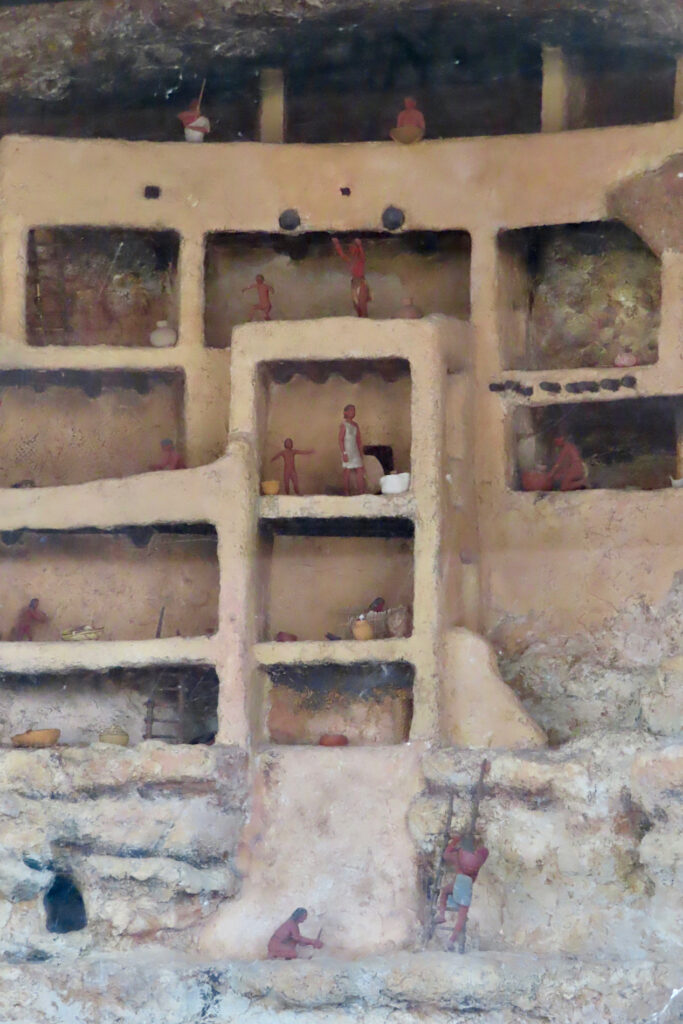
Walking the path back to the visitor centre, past the towering white sycamore trees along the creek banks, we all agreed that there is so much more to see that first meets the eye!
Additional commonly asked questions about Montezuma Castle
Is Montezuma Castle worth visiting? Absolutely – and I’m not the only one who thinks it! Over 360,000 people visited the site in 2023. For more than a century, tourists have been exploring this prehistoric site to see and learn more this spectacular cliffside dwelling and the people who once lived here.
Where is Montezuma Castle in Arizona? Montezuma Castle is ideally situated off Interstate 17, 25 miles (40 km) from Sedona, Arizona.
Can you go inside Montezuma Castle? Sure – if you can time travel back to the 1940s! Early visitors were allowed to climb ladders to enter the cliff dwelling. Increased visitation and liability became major concerns. Monument visitors were no longer allowed to enter the cliff dwelling after 1951.
How old is Montezuma Castle? Construction of this cliff dwelling began around 900 years ago. It was inhabited for about 300 years before being left to the elements when the Sinagua people moved on.
What does it cost to visit Montezuma Castle? If you have a National Parks pass, nothing. Otherwise, visits are $10/adult (15 and under are free) and is good for 7 days. Note: this fee also covers entrance to Tuzigoot National Monument.
When is Montezuma Castle open? Montezuma Castle is open from 8:00 am to 4:45 pm daily except for Thanksgiving, Christmas, and New Year’s Day. It also closes at 1:45 pm on Christmas Eve.
Is Montezuma Well associated with Montezuma Well? Funny you should ask! Yes, it is – and we’re about to dive into the well in the following section!
What and where is Montezuma Well?
Many people don’t realise it, but there are two sections to Montezuma Castle National Monument – Montezuma Castle and Montezuma Well. The well is located about 11 miles (18 km) north on Wet Beaver Creek.
Prehistoric people began living in the area around Montezuma Well around 11,000 CE. Sinagua buildings dating from around 1400 CE surround the water hole. The first Anglo-Americans settled at Montezuma Well in 1870.
By 1889, William and Margorie Back were ranching and farming in the area. They turned the site into a tourist attraction, charging for tours and offering a resort for guests as well as camping and picnicking options.
In 1943, the Backs agreed to sell their land to the government. Four years later, Montezuma Well became part of the National Park Service – and eventually a unit of Montezuma Castle National Monument.
We walked the short, paved path up from the parking lot to the Montezuma Well overlook, reading interpretive signs, searching for mud turtles, and looking at the prehistoric ruins tucked below the rim with binoculars.
Wandering down to the river outlet, past the remains of the small irrigation ditch, we appreciated the Arizona sycamores growing tall on the banks of Wet Beaver Creek almost as much as the clear stream flowing through the rock from the Well.
It is an oasis in the desert. It’s no wonder it attracted people from the past… and continues to attract people today.
When you visit Montezuma Castle
Parking is limited at Montezuma Castle National Monument. Try to visit mid-week, if possible, to avoid weekend congestion. Large motorhomes and trailers may find it difficult to find enough space to park. Some people leave larger rigs near the casino just off the Interstate.
If you’re loving learning about past cultures in this area, be sure to make time to explore other Sinagua sites nearby such Palatki, Honanki, and the nearby Crane Petroglyphs site.
Montezuma Castle National Monument and Montezuma’s Well – and all of the cultural sites mentioned above – can be reached in an easy day trip from Dead Horse Ranch State Park (if you’re looking for a camping base while exploring the past).
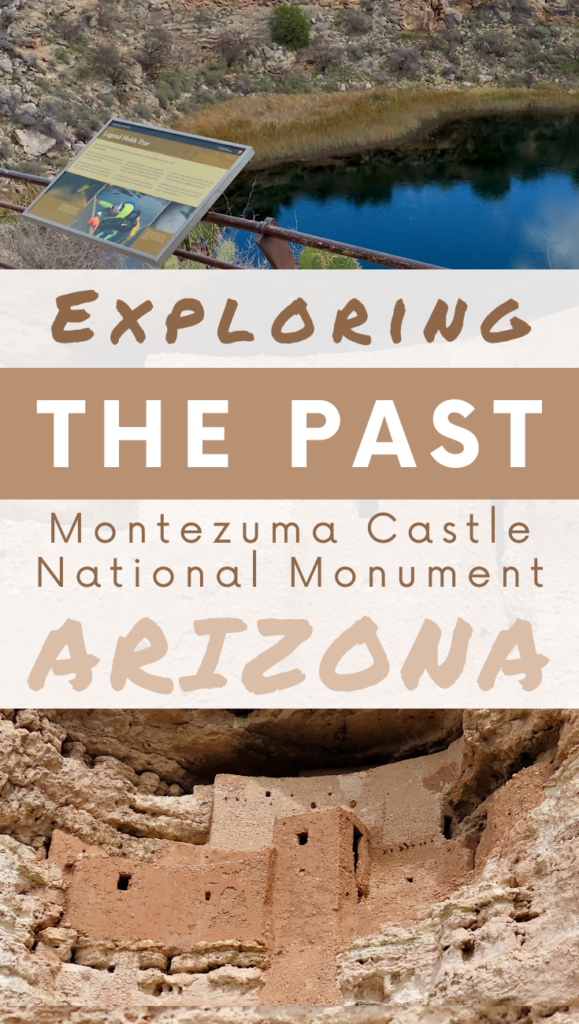
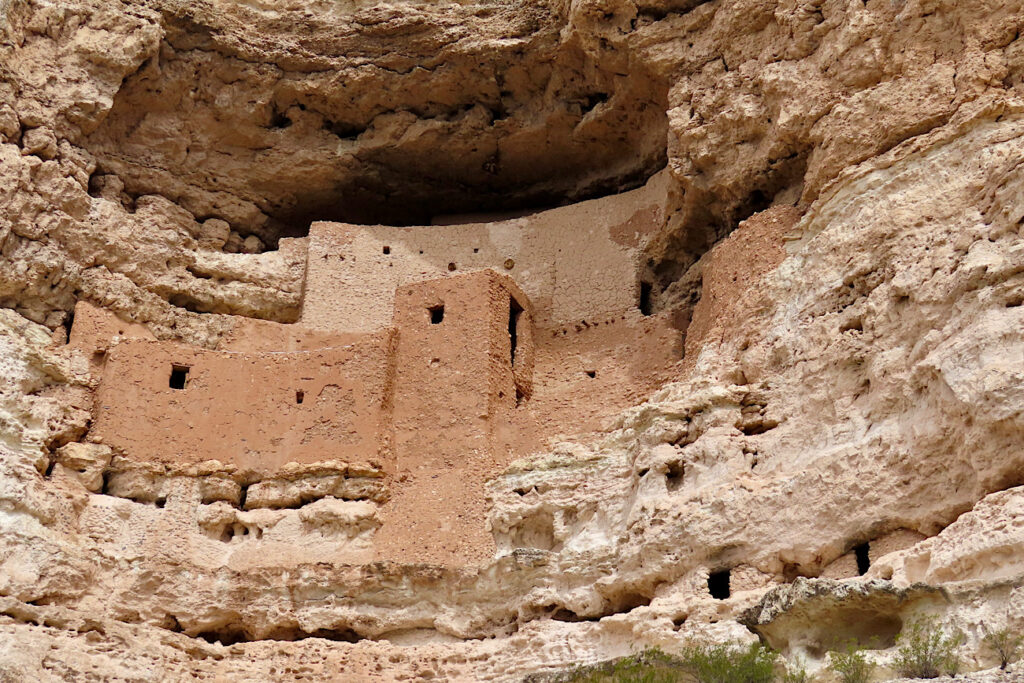
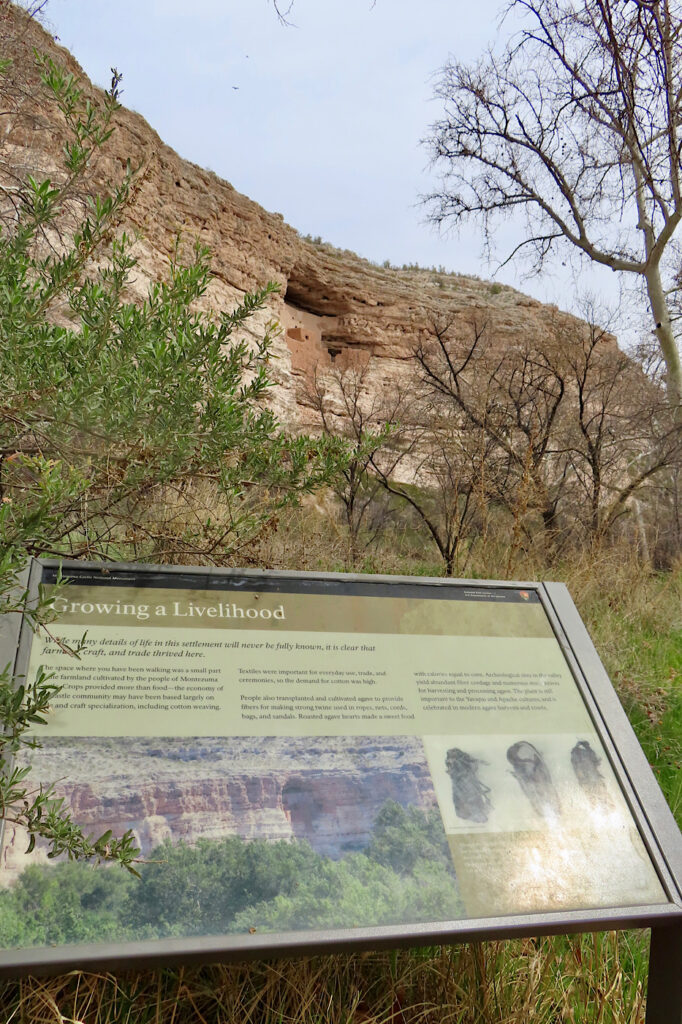
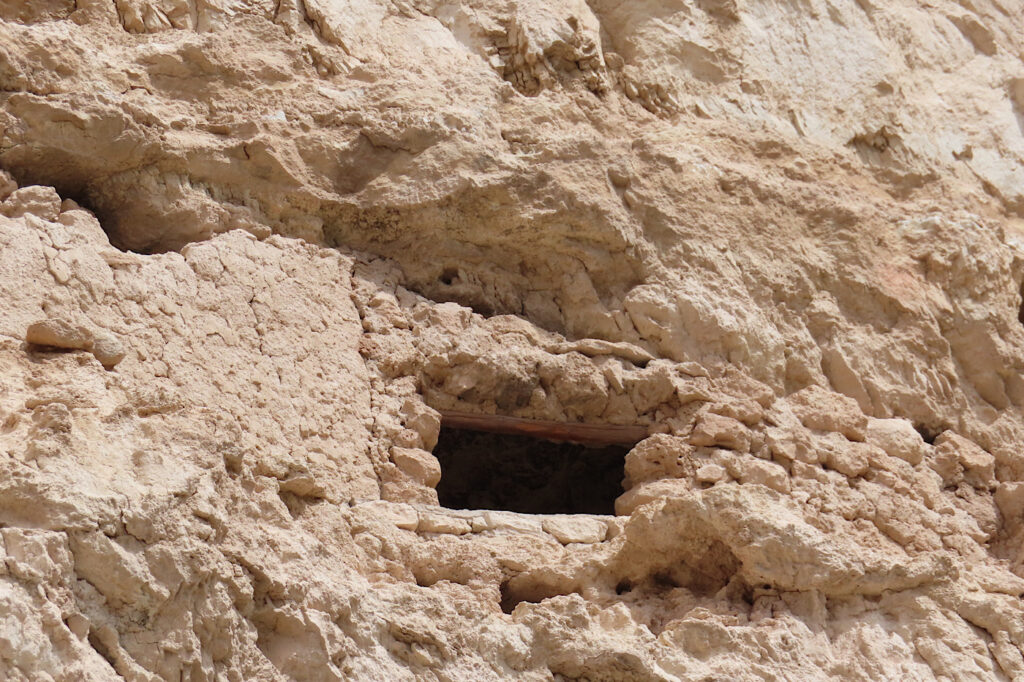
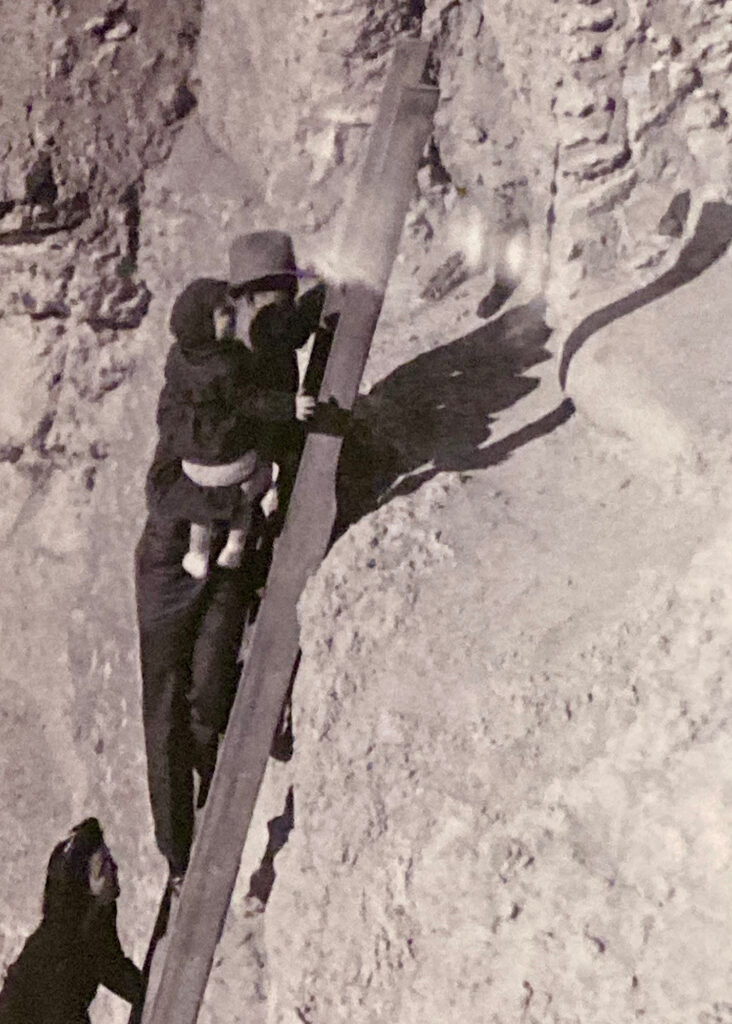
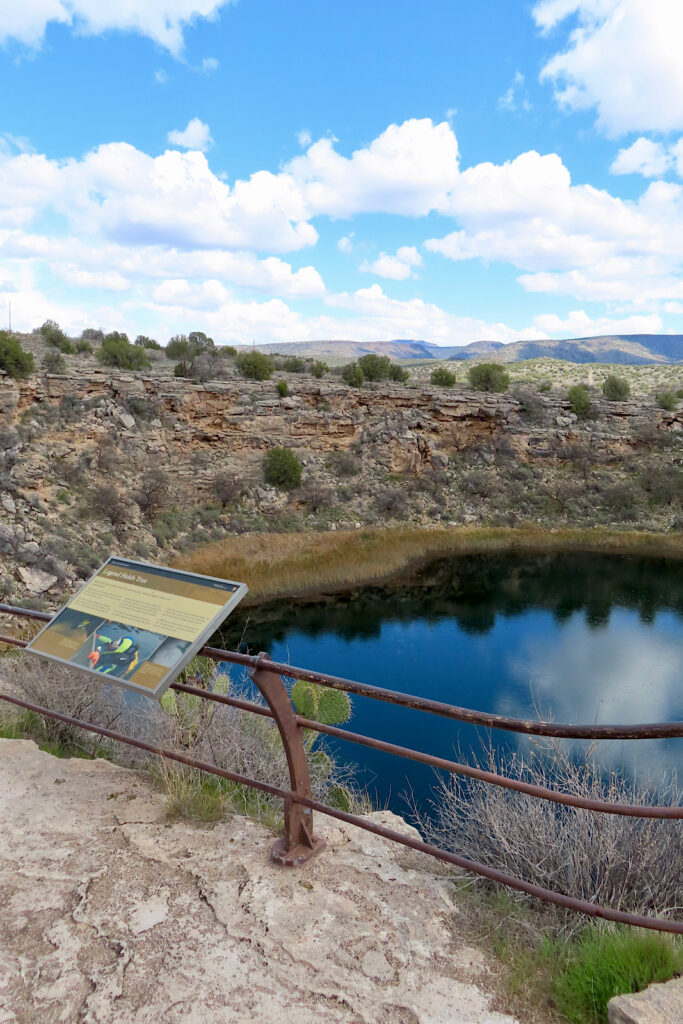
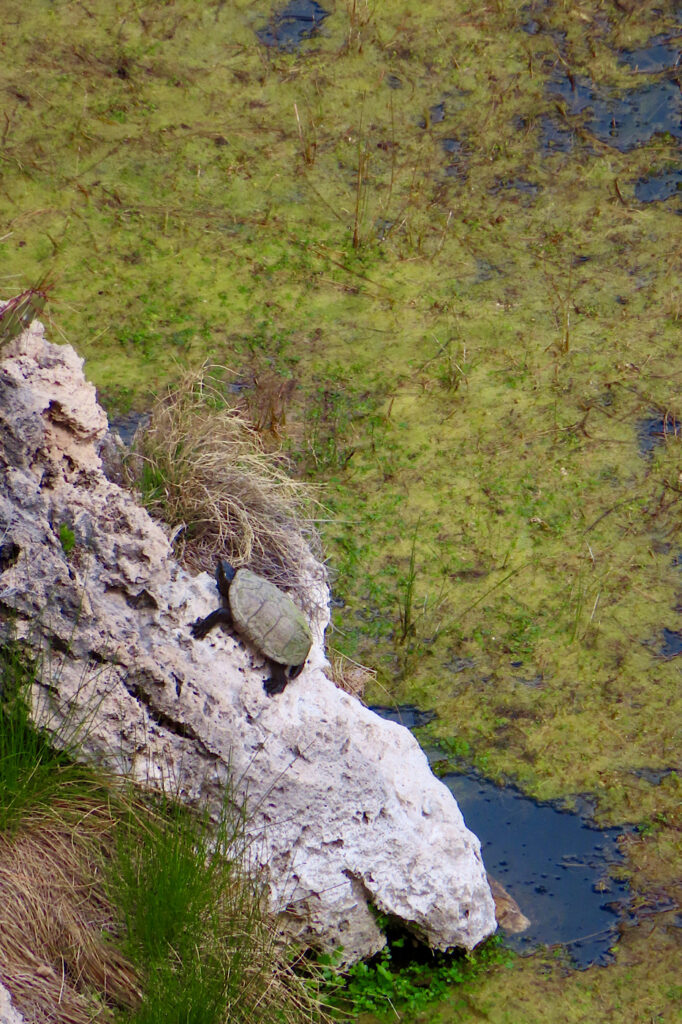
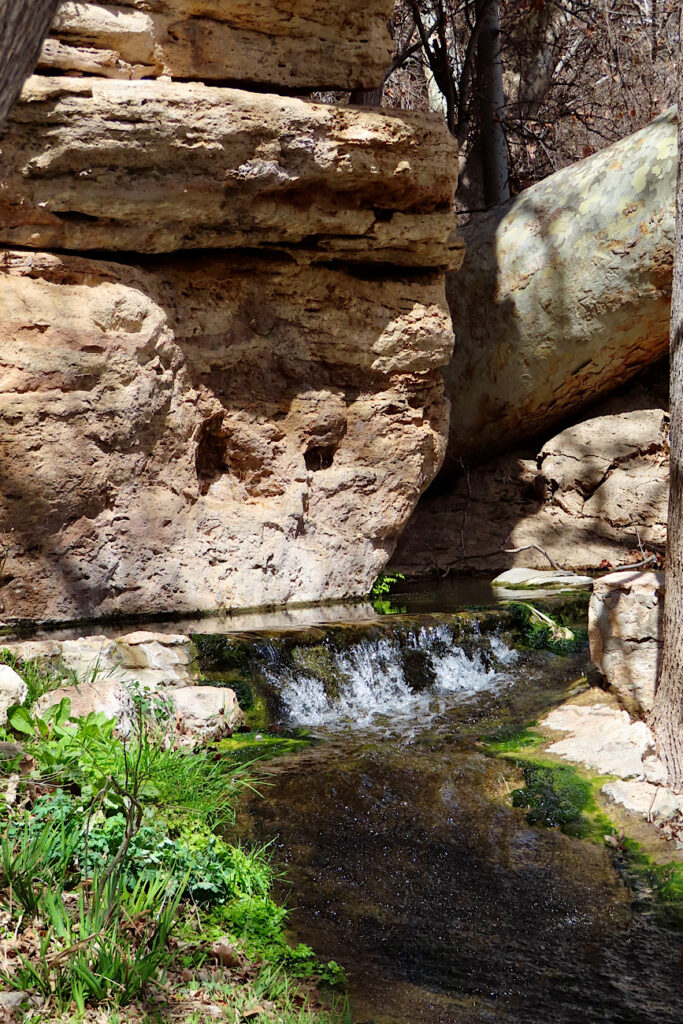
Leave a Reply